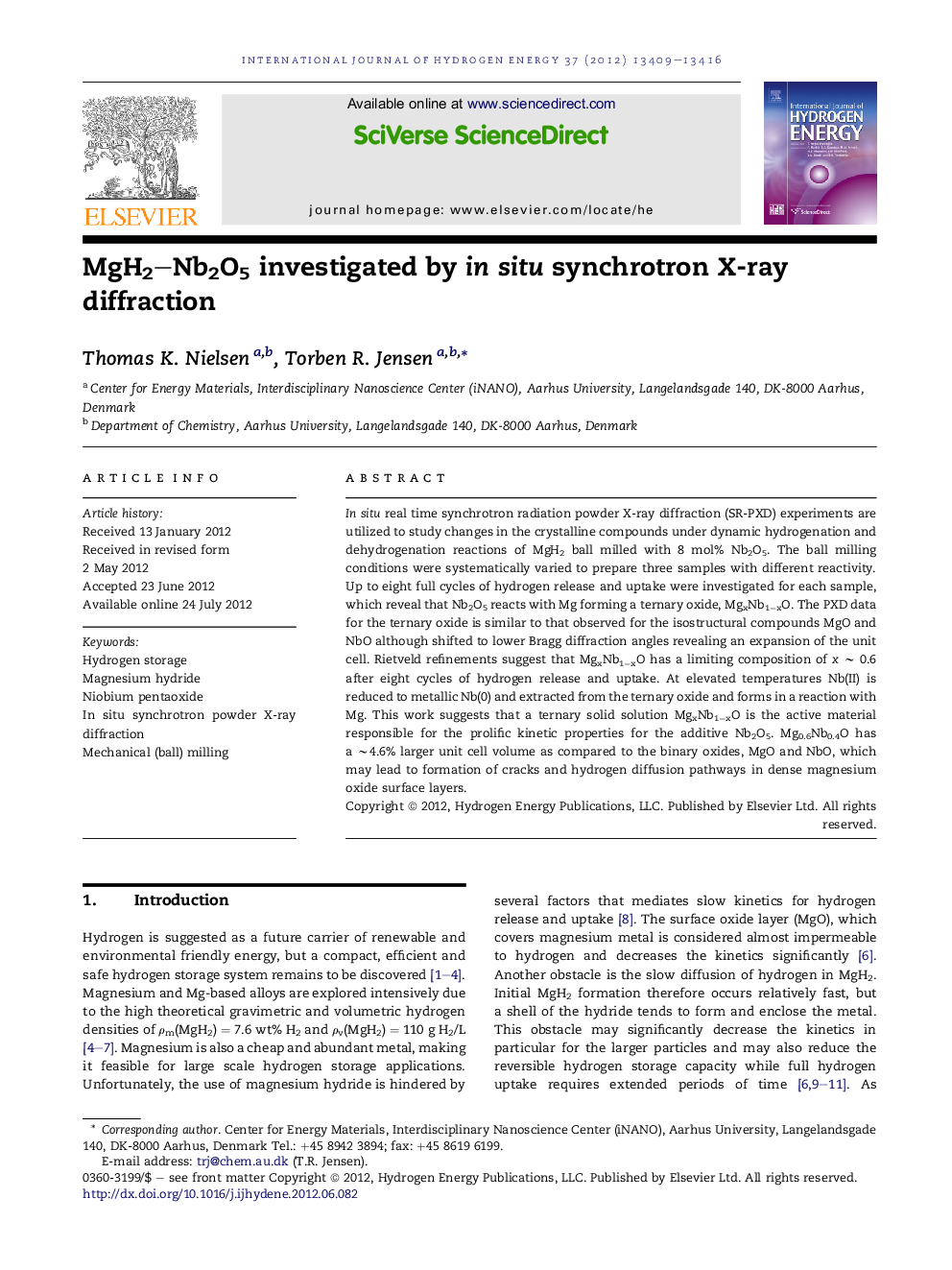| Article ID | Journal | Published Year | Pages | File Type |
|---|---|---|---|---|
| 1282236 | International Journal of Hydrogen Energy | 2012 | 8 Pages |
In situ real time synchrotron radiation powder X-ray diffraction (SR-PXD) experiments are utilized to study changes in the crystalline compounds under dynamic hydrogenation and dehydrogenation reactions of MgH2 ball milled with 8 mol% Nb2O5. The ball milling conditions were systematically varied to prepare three samples with different reactivity. Up to eight full cycles of hydrogen release and uptake were investigated for each sample, which reveal that Nb2O5 reacts with Mg forming a ternary oxide, MgxNb1−xO. The PXD data for the ternary oxide is similar to that observed for the isostructural compounds MgO and NbO although shifted to lower Bragg diffraction angles revealing an expansion of the unit cell. Rietveld refinements suggest that MgxNb1−xO has a limiting composition of x ∼ 0.6 after eight cycles of hydrogen release and uptake. At elevated temperatures Nb(II) is reduced to metallic Nb(0) and extracted from the ternary oxide and forms in a reaction with Mg. This work suggests that a ternary solid solution MgxNb1−xO is the active material responsible for the prolific kinetic properties for the additive Nb2O5. Mg0.6Nb0.4O has a ∼4.6% larger unit cell volume as compared to the binary oxides, MgO and NbO, which may lead to formation of cracks and hydrogen diffusion pathways in dense magnesium oxide surface layers.
► Observations by in-situ SR-PXD at variable temperatures and pressures. ► MgH2 and Nb2O5 react to form the ternary oxide MgxNb1−xO. ► Mg0.6Nb0.4O is the active material to improve hydrogen release and uptake in MgH2. ► Mg0.6Nb0.4O expands and may form cracks in the MgO surface layer. ► The ternary oxide is an intermediate phase and finally Nb and MgO form.
